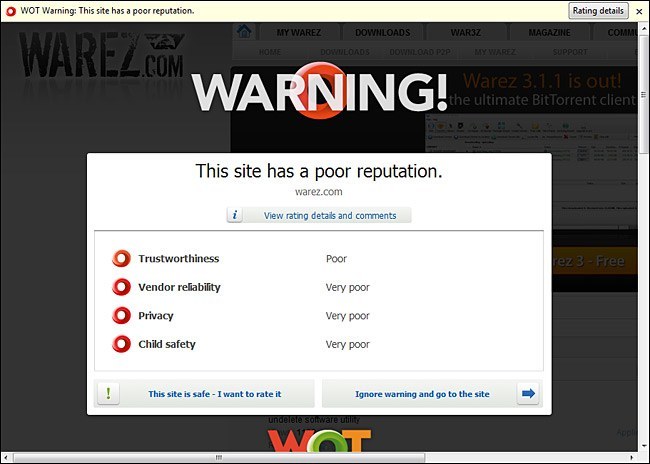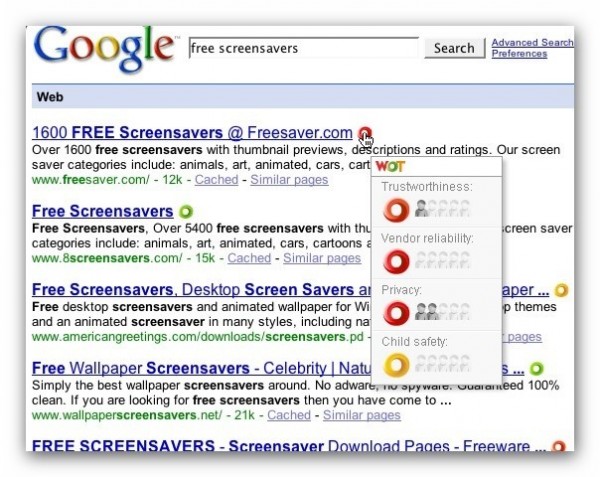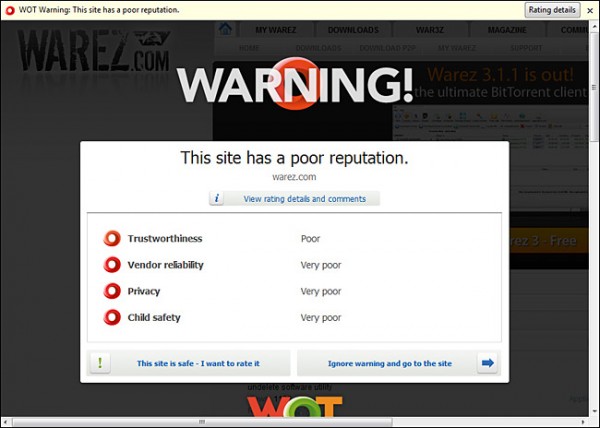
The internet can be a dangerous place. The only websites that are safe to visit are mainly those owned by the biggest companies like Microsoft, Amazon, eBay, Apple and Yahoo. Users have to be really careful navigating the web unprotected. One wrong click and your browser gets hijacked, your PC becomes a slave to some hacker, your screen gets bombarded with popup after popup, your files and data get encrypted and put up for ransom and at worse, your system gets bricked. One way to stay secure is to get the right tools such as Kaspersky Internet Security and Norton Internet Security. But if you can’t afford subscribing yearly to these software, there are free alternatives or you need to visit only websites you can trust. Doing so would be very limiting or you could rely on others to trust sites on the web for you.
The Web of Trust
Aside from spam sites and malware hosts, the web is rife with questionable material, either false or malicious, therefore untrustworthy and users, especially children need to be protected from those too. There’s a tool and service available that can protect users from both technically malicious and entropic websites known as the Web of Trust (also known as WOT or MyWOT). The Web of Trust is a browser add-in that informs users of the trustworthiness of the websites they’re about to visit by including icons or markers in search results indicating the level of trust for reviewed websites. It also advises and warns users of a website’s potential danger before proceeding. WOT is basically a free website rating service where members rate websites they visit whether or not it’s trustworthy. Through the browser add-in, even non-members can pitch in and rate every website they enter. Users can rate a website whether it’s favorable or untrustworthy and the collective ratings will reflect on search results or direct entry.
WOT began in 2007 and is founded by Finnish entrepreneurs Sami Tolvanen and Timo Ala-Kleemola. The premise is nice overall, by letting web users as a community help each other in filtering out the good websites from the bad. It’s like a circle of trust among web users, at least for the millions who use the plugin. It helps users stay away from ad ridden sites with no real information, phishing web sites, fraudulent sites, hoaxes, Ponzi schemes and the like. WOT users can also see if websites aren’t kid friendly in order to keep children from accessing harmful content. It’s a free alternative to expensive internet solutions with over 100 million downloads as of 2013 and has even partnered with other security companies such as Phishtank, Panda Security, TRUSTe and GlobalSign. WOT is also partnered with Facebook. WOT is a great concept where everything is dandy if done properly.

But now, WOT is besieged with accusations of corrupt practices, false claims and technical incompetence. For casual users unaware of these problems, the service simply works. They’re warned and they stay away. The site is green, then it’s good to go. For example as shown below, a site may offer free screensavers but actually wants you to sign in first with your credit card info, thus it gets an untrustworthy mark at least for false advertising. But WOT can sometimes miss its mark and users might scratch their heads when at times, good websites, including sites they’ve been to, get red marks.

WOT admins are also accused of being difficult to work contact and also difficult to reason with when it comes to ratings corrections though some admins are genuinely helpful and may even suggest corrections to improve a website’s trust ratings. WOT also allegedly goes as far as to ‘sell’ positive ratings to website owners with a dispute. And because WOT doesn’t have real way to scan trust reviews versus website contents, WOT’s open system is apparently open season to micro-taskers who sell their services to give a website positive ratings. In WOT, an individual can have multiple accounts so if a website has ten positive ratings, those ratings are possibly from just one individual, not to mention the ratings the individual can post as a non-member through the WOT plugin.
It’s Still Up to You
Accusations such as those mentioned give the WOT service some questionable value though the service remains popular as it is infamous since MyWOT results in Google show both positive and negative results. As mentioned, the service works but not at 100% capacity as possibly millions of sites remain unrated or falsely rated. Still the scope of these false reviews remain unclear and it would be up to the would-be user to use WOT or not. If not, free alternatives to WOT include AVG Secure Search, Trafficlight Bitdefender and Trustpilot.
Since we had gotten so many e-mails asking us to look into WOT, tell us your experience with them.


